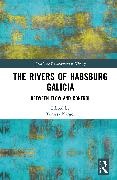En savoir plus
Providing an in-depth exploration into the rivers of Habsburg Galicia (part of Austrian Poland) in the 19th century, this volume combines analysis of historical hydrographic data with modern GIS and remote sensing tools.
Considering geographical and historical factors, the book draws on both natural processes and human activities, to analyse how river valleys function and highlight contemporary challenges relating to water resource management in the context of climate change. The collection is divided into four parts, Rivers, Flow, Control, and Economy. The first part consists of studies on rivers in Galicia from geographical, borderland, legislative and literary perspectives. The second deals with the floods that regularly affected Galicia in the 19th and 20th centuries, causing significant economic and social damage, providing pertinent parallels with current issues in the context of climate change. The third part analyses the actions of the state and autonomous authorities, aimed at controlling rivers through regulation, the construction of flood embankments, and the drainage of wetlands. The final part includes studies on the role of rivers in the economic life.
This is a detailed and fascinating examination for scholars and students interested in Eastern European environmental history, hydrology, environmental management and water resource governance, and environmental economics.
Table des matières
Introduction Section I Rivers 1. RIVERS OF GALICIA: A PHYSICAL-GEOGRAPHICAL CHARACTERIZATION 2. CITY AND TOWN - RIVER - BORDERLAND. CITIES AND TOWNS ON THE VISTULA AND SAN RIVERS IN GALICIA IN THE 19TH CENTURY 3. WATER LAW IN GALICIA DURING THE TIME OF AUTONOMY (1867-1914) 4. THE DNIESTER IN POLISH WRITING AND ART IN THE ERA OF PARTITIONS
Section II Flow 5. THE HYDROLOGICAL HISTORY OF FLOODS IN GALICIA (1772-1918) 6. THE RECONSTRUCTION OF KRAKOW'S URBAN INFRASTRUCTURE (1813-1815) AFTER THE FLOOD OF 1813 7. SOCIAL IMPACTS OF THE 1844-1845 FLOODS IN WESTERN GALICIA
Section III Control 8. CONSTRUCTION OF FLOOD EMBANKMENTS AND REGULATION OF RIVERS IN GALICIA IN THE SECOND HALF OF THE 19TH CENTURY AND THE BEGINNING OF THE 20TH CENTURY USING SELECTED EXAMPLES 9. HYDROTECHNICAL ROAD TO PROSPERITY - ORIGINS OF DIRECT HUMAN IMPACT IN THE VALLEYS OF GALICIAN RIVERS 10. REGULATION OF WATERCOURSES AND DRYING OF MARSHES IN GALICIA AS ILLUSTRATED BY THE EXAMPLE OF THE VISTULA LOWLAND: A CASE STUDY FOR THE BRE¿ RIVER AND ITS CATCHMENT AREA
Section IV Economy 11. RIVERS IN GALICIA'S ECONOMIC MODERNISATION PROGRAMME IN THE 19TH CENTURY 12. RECONSTRUCTION OF THE DISTRIBUTION OF WATER MILLS IN THE SKAWA CATCHMENT AREA IN THE PERIOD FROM THE 1780S TO THE BEGINNING OF THE 21ST CENTURY 13. RIVER TRANSPORT AND RAFTING IN GALICIA IN THE 19TH CENTURY 14. "TURN THE STAGNANT SWAMPS INTO CANALS" - UNFULFILLED MODERNISATION AMBITIONS FOR THE INLAND WATERWAY NETWORK IN HABSBURG GALICIA
Summary. The rivers of former Galicia today
A propos de l'auteur
Tomasz Kargol is a Professor in the Department of Polish Modern History at Jagiellonian University, Krakow, Poland.

